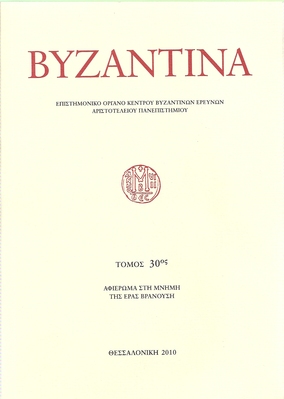Προσκυνήματα και μεγάλα μοναστικά κέντρα στην Ισαυρία και Κιλικία
Part of : Βυζαντινά : επιστημονικόν όργανον Κέντρου Βυζαντινών Ερευνών Φιλοσοφικής Σχολής Αριστοτελείου Πανεπιστημίου ; Vol.26, No.1, 2006, pages 101-124
Issue:
Pages:
101-124
Parallel Title:
Shrines and great monastic centres in Isauria and Cilicia
Author:
Abstract:
Asia Minor was very important for the Byzantine economy and for the Church, as it is known, because it played a decisive role to the expansion of the Christian religion during the 1st century AD. The Apostle Paul visited Asia Minor in all his three journeys (46-52 AD), teaching the new religion, founding new Christian communities and coming in touch with the already founded ones. Paul reached Europe through the peninsula of Troas and visited during his second and third journey Philippi and other cities in Macedonia, Athens and Corinth. Several scholars estimated that until the middle of the 5th century AD over 60 percent of the population in the Midwest and Southeast Asia Minor had become Christian. Therefore, the opinion that Asia Minor is the main country of early Christianity can be considered correct.Very well known great shrines from the Early Christian period are the tomb of the Apostle John in Ephesus, the tomb of St. Euphemia in Chal- cedon, the tomb of St. Theodore in Euchaita near Amaseia, the shrine of Archangel Michael in Germia, west of Ankara, and the shrines of St. Thecla and St. Theodore near Seleukeia (Silifke) in West Cilicia, known as Isauria Tracheia. It cannot be accidental that at the beginning and at the end of the road, which crosses Asia Minor, from Chalcedon to Seleukeia, there are two very important shrines of women saints: St. Euphemia and St. Thecla.The shrine of St. Thecla, about 2 km. south of Seleukeia and Alahan Monastir, on the passage of Mount Taurus from Constantinople to the Holy Land, was one of the most important centres for the pilgrims in the Early Christian period. The focuses of this paper are the shrines of St. Thecla and Alahan Monastir.
Subject (LC):
Notes:
Περιέχει 19 εικόνες




